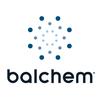Homeopathy medicine in cattle disease control
It´s been found that some of the homeopathy medicine is effective for prolapse control, etc
what are your experiences?
Viswanatha Reddy
Sir,
How many pills should be charged by homoeopathy medicine for teat fibrosis?
Viswanatha Reddy Sir, I'm veterinary doctor, please send me info about reproduction my mail I'd is vinayangadi555@gmail.com
Rakesh
For non-specific diarrhea (loose motions) we use Homeo drugs Merck sol 200 Antimony crudum 30 and Podophyllum 30 or 200 each 10 pills of 30 size globules 3 times in a day for 3 days. To prevent dehydration ORS of FDC company 1 pocket is dissolved in boiled and cooled water and made up to 1 liter and given to the animal.
There are in the market ready-made antidiarrhoeal drugs with and without antibiotics can be used.
V N Viswanatha Reddy.
Veterinarians of Bangalore milk union have treated more successfully the below conditions
only with homeo drugs
1.Teat fibrosis / udder fibrosis / where AI gun could not be passed intra uterine due to cervicitis
2.Blood in urine in calves without fever
3.Opacity of cornea due to injury
4.Pre partum prolapse of vagina / cervix
5 Post partum evrsion of uterus
6.Non specific diarrhoea
7.Mild adhesions of fallopian tube
8 Abscess
Viswanatha Reddy can we treat mastitis if its 1 month old? It has become hard and there is no milk secretion.


Evonik Animal Nutrition
Homeo Drugs used for certain conditions by Bangalore Milk Union Route Veterinary doctors
1. Fibrosed teat canal / In cervicitis where AI gun don’t pass easily to do AI: Aurum Muriaticum Natro Natum (AMNN)30 - 5 ml, Thiosinamum6 - 5 ml, Gun powder6 - 1 ml and Conium 30 - 1 ml Calcaria flour 30 - 1 ml charged to sugar pills and these pills have to be fed daily 3 times a day till the fibrosis disappears. If the animal shows any straining in 15 minutes time after giving pills discontinue the use of drug AMNN. Knuckling the thumb or stripping the teats has to be avoided. Full hand milking has to be adopted. Daily applying the fruit pulp of Noni fruit to the surface of fibrosed teat resolves it.
1a. Fibrosed udder: Calcaria carb30 -5ml, Carbo animalis30 -5ml, Aur. mur. nat. natum30- 1/4ml, Thiosinaminum30- 1/4ml. Above mixture 1/2ml in 3ml of distilled water is indicated weekly once intramammary, 4-6 weeks. Contents of udder have to be removed before next injection. Better response for next lactation. To 250 gm Pig fat (it should be lukewarm) 20 gm of Iodex ointment is mixed for external application only to the udder and not to the teats. Soon after applying the hands has to be washed thoroughly. Can be used for fibrosed knee or stifle joint where good bedding is advised/ 6inches thick sand bed has to be provided.
2. Blood in urine: Withdrawing water from drinking makes the calves to lick soil, they develop pot belly. After withdrawal followed by providing water is a cause for this. Eating few varieties of fodders, plants like break fern is also a reason for this. Not feeding quality mineral mixture is the other reason. Provide water, mineral mixture and avoid access to such fodders/plants which cause problem. Hamamalis30 and Kali chlor30 each 10 pills TID for 5 to 7 days is advised.
3. Opacity of cornea or eye injury: Eupharesia30 and Symphytum30 are mixed and given 20 pills TID daily till recovery. The eye has to be protected from sunlight with black or blue colour cloth. Chloromycitin apppli caps can be applied twice a day, daily till recovery.
4. Prepartum prolapse of vagina/cervix: To half a bucket of cold water few crystals of Potassium permanganate are added and dissolved so that the bottom of the container is visible and the solution should have a light pink colour. Too dark colour will cause further irritation and prolapse. Prolapsed part is washed with 4 liters of water per time. Homoeo drugs Opium200, 10 pills 3 times a day are fed for 3 to 5 days. Carbo veg30/200 is given if there is used eversion of rectum and Ignatia30 if the animal is excitable, dose each10 pills 3 times a day are fed for 3 to 5 days. The hind limbs are elevated by 6 inches when the animal is lying down. Try to feed small quantities of dry fodder more times in a day or reduce green fodder intake. Withdraw fodders or plants which have been identified to cause prolapse due to more phytoestrogen content. Injecting Progesterone 2mg/kg body wt. Once in a week till calving can be practiced.
5. Eversion of uterus: Two handfuls of rice are soaked in water for 15 minutes, decant the supernatant, to that mix the juice from the leaves of touch me not or the juice of entire plant of touch me not and smear to the everted part. To that animal 20 pills of Podophyllum30, Sabina200, and Ignatia30 each one dose. The other line of treatment is injections of 20ml of Duvadilan (Dupharlabs) or Bricanyl (Astra zenac) can be administered. The hind limbs have to be elevated. Try to feed small quantities of dry fodder more times in a day or reduce green fodder intake.
6. Chronic diarrhea: Merck corrosive200, Antimony crud200 and Podophyllum30 10 pills each TID, for 1 to 3days advised.
7. Mild adhesions of fallopian tube: Thiosinamum6 - 5 ml, Calcaria carb 30- 1 ml and Conium 30 - 1 ml Calcaria flour 30 - 1 ml charged to sugar pills and these pills have to be fed daily 3 times a day till the fibrosis disappears.
8. Abscess: Calcaria sulph 6x and Hepar sulph 6x each 20 pills TID, 7-or more days. Silicia 30, one dose of 10 pills once in a week.
V N Viswanatha Reddy
Retd Professor Veterinary College, Bangalore.
Hf crossbreed cow repeat breeding and 2-3 time A.I. after no pregnant and not come in heat. Sir, please give me best solution of this my dairy farm in Rajasthan.
Dear Gulshan Narang,
In India the situation is different many farmers have 1 to 10 animals and management can be better provided he knows what is correct management. In many instances, it is the female folk manages livestock and also as homemaker.
If a veterinary graduate can examine the animal on the day of estrus and thereafter once a week for 3 more times and has to asses the uterine tone, tubularity and consistency as well ovary length, height/breadth and thickness and ovarian structural changes and by recording them as black and white, the farmer has to maintain estrus dates and AI dates. and interpreting it is possible to know reasons for repeat breeding.
A. HOW TO AVOID REPEAT BREEDING IN BOVINES?
1. By proper steaming up of the animals during dry pregnancy period, giving 150 mg of sodium selenite and 400 mg of vitamin E, restricting the body score between 3.50 to 3.75 / 5.00 scale. Use ecbolic drugs after calving. By challenge feeding during postpartum period and concentrates are fed 3 to 6 times a day at the rate of 2.00 to 3.00 kg + 50 to 60 per cent of milk yield. Use of two doses of PGF2 alpha around day 20 to 28 after calving and 12 days later or adopt ova synchronization or pre-synchronization ova synchronization method to prepone postpartum anoestrous. It is preferred to restrict forward breeding in graded animals (F2 generation).
2. Newborn calves should be fed with colostrum within 15 minutes. Rough maize powder is fed from day 5, calf starter (27 kg dry Lucerne/Fenu greek fodder at flowering stage, 32 kg Soya bean cake/ ground nut cake, 38 kg wheat bran, 2 kg mineral mixture, 1 kg salt and 100 gm vitamin mix. Calves consumed colostrum lately grow slowly, with under developed genitalia (UDG) and don’t mature earlier to 30 months, there after also they do commonly become repeaters. UDG cases are treated by deworming, feeding mineral mixture for 4 – 6 weeks; inject depot progesterone (Proluton depot/ Duraprogen) 250 mg IM and skip first heat.
3. By proper hygiene at the time of calving and rest is needed for two normal cycles, which had partum or postpartum complications.
4. Proper record keeping is necessary. i) The intensity of heat. I) duration of heat, iii) degree of relaxation of sacrosciatic ligaments, iv) quantity and quality of mucus discharge, v) quantity of urine passed around AI time, vi) on the day of heat, 3, 10 and 17th day the tonicity, tubularity, consistency of uterus as well on these days. Length, height/breadth, thickness of the ovary and size-and the consistency of follicle (cyst) CL are recorded. These will help in deciding the case is a repeat breeder or not and planned treatment can be done.
5. Avoid excitement around the time of Al, giving 15 minutes rest before and after AI, gliding the AI gun over the clitoris massaging of clitoris after AI is necessary.
6. Maintaining proper LN2 levels, proper hygiene at the time of AI, and in any intrauterine treatment is most needed.
7. In early heat semen is deposited intra cervically and in the late mid / early late heats 1/2 the semen is deposited i/u and rest is deposited intra cervically while withdrawing the AI gun.
8. Semen is preferably thawed in warm water at 35.5 to 37oC for 30 seconds using a thermometer to check the temperature of water, should be used as early as possible and thawed semen should not be carried in the pockets, over ice cubes for AI.
9. The animal should be getting its share of dry matter and other nutrients depending on the milk yield and fat per cent. Feeding less Dry matter can be a major cause for repeat breeding.
B. HOW TO TREAT REPEAT BREEDER COWS?
1. Using double sheath AI and doing Caslick's operation in pneumo-vagina cases.
2. Using Povidone iodine solution into ipsilateral horn to further regress a regressing CL and doing AI next day.
3. Using pre or post-AI antibiotics in the second heat. Mucus discharge is collected for isolation and antibiotic sensitivity.
4. In the third heat, treated with GnRH/hCG/Bromocryptin/ Vitamin C injections during heat. On day 3 and 10 injecting antibiotics intramuscularly or PGF2 alpha on day 10 to 12 of heat and in the induced heat antibiotics are used according to the antibiotic sensitivity and inseminated in the following heat.
5. In the next heat endometrial biopsy is collected and tubal blockage is tested and relieved if uterus is free from infection.
6. Animals suffered from Foot-and-Mouth disease, if show heaving symptom homeo drugs, Ipecac 30, Iodum 200, each 10 pills TID is given for 7 days and repeated after a week. Alternately Entodon injections and colossal iodine is given orally or feed 30 gm iodinated salt twice a day for 60 days. They are fed with a handful of overnight soaked (later grinded) Fenugreek seeds (Trigonelle foenum) and 50 gm of fried, cooled and pounded Til / Gingilly seeds (Sesemum indicum) along with jaggary, for 10 days and may be repeated after 15 days.
7. Animals going down in their body condition in the early postpartum period can be fed daily with 2 kg of Ash guard (Cucumber lemo) and 100 to 200 ml of sesame oil or Gingilly oil in 4 divided for 10 to 15 days.
8. Check for acidity of rumen and correct it with sodium bicarbonate other mistakes can be feeding more rice polish or wheat bran or feeding finely powdered grain.
9. Check for uterine involution and infection of uterus and treat accordingly.
10. Check sub-clinical mastitis and treat accordingly.
11. Heifers with under developed genitalia are to be dewormed and fed mineral mixture, need be treated with Depot progesterone 250 mg and one immediate heat has to be skipped. Dr.Pachegoankar Deputy Director AH from Maharastra is of strong opinion to deworm on full moon day and 2 days prioir to full moon day which causes more death of worms with Allopathic or Ayurvedic or Homeo medicines
12. Using homeo drugs Sepia 200, 0.25ml, Conium 30, 0.25ml, Iodum 200, 0.25ml and Calcaria carb 200, 0.25ml. This mixture of 0.25ml in 5 ml water given orally3 times a day for 3 days can force either cows or heifers of cattle or buffaloes,in to heat provided you have dewormed, mineral mixture was fed and ovaries are bulged Using Cyclomin 7 having trace minerals once in 3 to 4 days one bolus at a time for 4 to 6 weeks can give still better results.
V N Viswanatha Reddy
Former Professor of Animal Reproduction,
Veterinary College, Bangalore
vnvreddy2004@gmail.com
Very good information for us, and it would be helpful for the practitioners and researchers also.
Imran farooq
In summer months to reduce ambient temp in the shed by 2 to 3 degrees centigrade we have to spray water with a micro sprinkler on the hump region and on the lumbar vertebrae if animals are tied in the shed between 10 am to 4 pm. if not we have to spray water for 5 minutes and put on fans for 15 minutes i.e. 3 times an hour between 10 am to 4 pm.Providing free access to clean cool water is a must. You can look in to THI charts in the Internet and now digital Humidity and ambient temperature electric gadgets are available it can be easily read. When humidity goes high the problem is difficult to set right.
Some have suggested trying GLONOINE 200 (Homeo drug) but we have not tried to cool down the body.
Low roof with poor out of exhaled breath from the animals can be a cause and providing an outlet with 2 inch diameter plastic pipe at every 10 feet distance can reduce the effect.
If the eye mucosa is pale we deworm the animal preferably in an empty stomach and feed or fodder is fed after 2 hours and increase the mineral mixture at 1 gram for every 10 kg body weight and 5 grams per liter of milk production. To improve iron levels in the blood we advise to feed curry leaves or palak leaves or slowly Inject Iron Dextron by IV route with 5% DNS.
v n viswanatha reddy
Thanks, Dr. for sharing your experience, most valuable add homeopathy in veterinary practice. Every practitioner should be trained.


Evonik Animal Nutrition
Sir, please suggest homeopathic medicine for 8 month aborted buff has no milk up to 200 gram daily.i trie to silicea 1m ,ignetia 200.Buff all over fit like eating, normal utrus.
Vinod kumar please try oxytocin, 2ml daily some day. Vitamin H, 20ml daily. Galog 2 bolus evening and morning 10 day.
My Gir cow has frequent prolapse problem 2-3 times in a month. Just 2 months before got abortion still facing same prolapse problem. Any homeo medicine to prevent this problem. Please help.
Pratik Bhajankar
I had not opened the dairy cattle forum for the last 2 months
For prolapse in homeo, we use opium 200 30 size pills 10 3 times a day for 5-7 days
If there is rectal prolapse also we use carboveg 200 dose as above
if cow or buffalo is excitable we use Ignatia 200 as above
Keep the front legs lower by 6 inches from that of Back legs
feed fodder small quantities several times in a day
now it is aborted get it treated for that first
vnreddy
Vishwanathan, Sir: my cow suffered from fetal maceration while pregnant for the 2nd time after 10 months of nondelivery the macerated fetus was removed in presence of a veterinary doctor, but even after 3 months of operation, she is unable to conceive again and come to heat in every 9-15 days. She had been provided many antibiotics, intravaginal, orally and through injections, but intravaginal discharges like ripe mucous did not stop. Please suggest some homeopathic cure for it.
Rajesh chaturvedi
Your cow may not become pregnant as deep layers of uterus would have been affected. Merck Sharp dome co METRICEF may be used. Ask the company people to help you. No homeo drugs will help now.
Sir,
My cow had been fallen and it not standing for 1 week sir, can you specify the medicines so that my cow stands? There is slight swelling in the both front legs of the cow. When we try to make it stand, it will stand for a while and again it sits back. it can not stands by its own. Please help me with this issue.
Hari Venkata Prasad
Since last 2 months, I had not opened the dairy cattle forum.
By this time your animal may be alright h 10 pills
we use commonly Arnica 200 Rhus Tox 200 Hypericum 200 each 10 pills 4 times a day
these pills each 20 are put into 150 ml water Avoid shaking allow them on there own
Give orally 15ml every half hour
Contact Dr naveen PK 9447829703








.jpg&w=3840&q=75)















